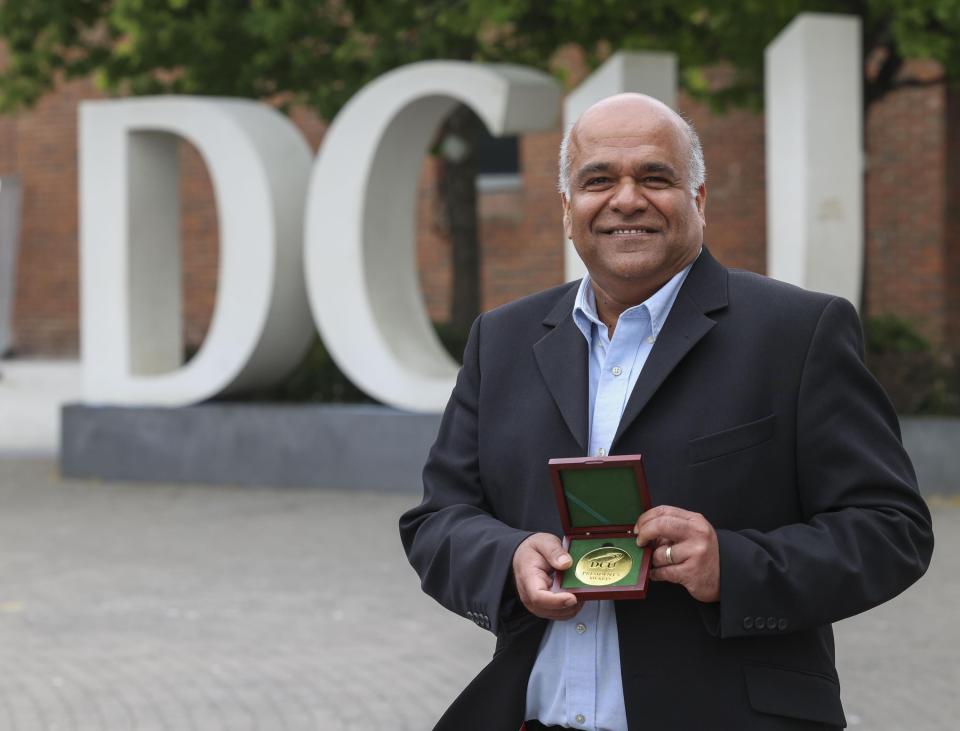
Research Newsletter - Issue 87: Spotlight
Optical Communications at DCU: the latest in a series of success stories
When it comes to navigation, even small errors in time measurement can lead to an error in distance obtained. For example, a timing error of a nanosecond or 1 billionth of a second translates into an almost 30-centimetre distance and positional error. Even the best mechanical and electric clocks have inaccuracies of a few seconds per day due to environmental conditions.
By tracking the electromagnetic radiation frequency of electrons as they transition from one energy level to another, scientists are able to keep time with an accuracy to within one second in a few hundred million years. It is for this reason, atomic clocks now set the length of a second and the time standard for the world.
Earlier this year, Prof. Liam Barry (School of Electronic Engineering) and Dr Seán Ó Dúill successfully tested a new calibre laser for the first time at DCU. The laser will operate in an optical atomic clock using strontium atoms, developed by commercial partners Eblana Photonics. These atoms, which are smaller than those used in other atomic clocks, are stimulated into energy transitions by the laser, in a process known as optical pumping. The laser developed in this project is smaller and requires less power than previous iterations, which is vital for use on board satellites.

Liam Barry and Seán Ó Dúill
The research was partially funded by the European Space Agency (ESA), one of the leading forces pushing forward the technology of next generation space based atomic clocks.
Prof. Barry said,
“The development of optical and photonic technologies will be key to tackle many global challenges in the areas of communication, transport, health, and climate. We are delighted to collaborate on the development of optical sources for the next generation of atomic clocks, which will be key for timekeeping and global positioning."
Many of us struggle to navigate new cities, or even our own, without the help of our smartphones. These devices can help us find our way around with great precision thanks to satellite based navigation systems. This same technology supports all manner of apps on our devices, including social media and dating apps.
These navigation systems, such as Galileo in the European Union and the United States’ Global Positioning System, are reliant on the hyper accurate timekeeping capabilities of microwave atomic clocks and future optical atomic clocks have orders of magnitude improvements on current microwave transition clocks. With the rapidly improving performance of optical clocks, it will only be possible to take full advantage by operating them in space, since on Earth the clock frequency is influenced by the Earth’s gravitational potential at the location of the clock. Therefore, in the future, most applications requiring the highest accuracy will require operating optical clocks sufficiently far away from Earth.
This new innovation addresses a key need identified by the European Space Agency, who are at the forefront of next generation space navigation systems. The work has recently been published in the Journal of Optics and Laser Technology.
Optical communications and photonics research is a longstanding success story at DCU.

Prince Anandarajah
For Prof. Barry, Director of the Radio and Optical Communications Lab at DCU, this most recent innovation is the latest in a successful career in which he’s been given the President’s Award for Research and has been admitted into the Irish Academy. In 2013 he was one of five co-founders of the DCU Invent spinout company Pilot Photonics, where Sean has worked part time on an industrial fellowship. Dr Prince Anandarajah (School of Electronic Engineering), another recipient of the President’s award, is also a co-founder.
Recently, an opportunity presented to tell this latest part of the story. In the context of increased national interest in atomic clocks, following the National Standards Authority acquiring one for the first time, Prof Barry and Dr Ó Dúill’s latest innovation was covered by RTE. With the NSAI story in mind, Prof. Barry and Dr Ó Dúill were able to work with Communications and Marketing on a timely and focused press release.

Mingming Liu
Dr Anandarajah has also found moments when his research intersects with current affairs. Recently, Dr Mingming Liu, another researcher in the School of Electronic Engineering, worked with the communications teams within DCU and the Insight SFI Research Centre for Data Analytics to place articles referring to his new pollution tracking app with several outlets, including the Irish Times.
Promote your Research
It is always worth keeping an eye out for angles that may facilitate pitching your research to the media. The Communications and Marketing team can advise on this and work with you on a press release or pitch. In next month’s edition of Research Spotlight, we’ll hear from researchers across DCU who have worked to promote their research externally.
